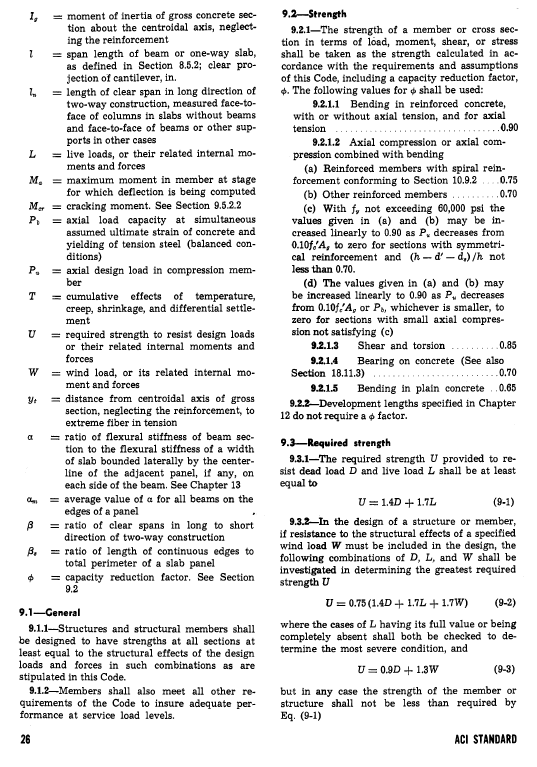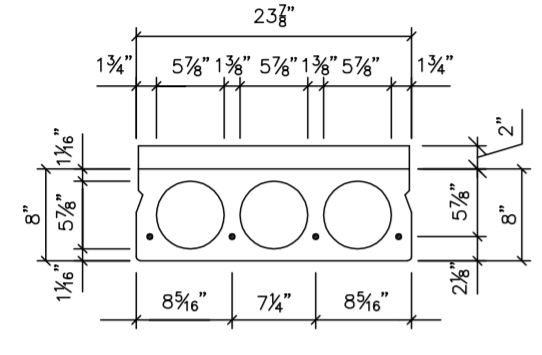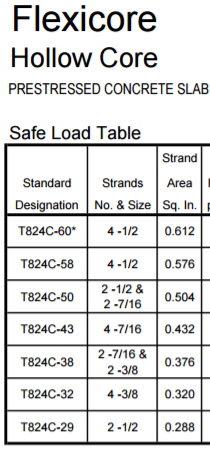MiguelPenaWSE
Structural
Afternoon everyone,
I am currently analyzing an existing structure (filing room with 8" thick precast slabs).
I was fortunate enough to find load tables for Flexicore Slabs dated 1971 (8"x24" section). These hollowcore slabs more-or-less match what we found on site.
Flexicore based their design on ACI 318-71 building code requirements.
I was wondering if someone had a copy of this document.
I am certain that back in the 70's, design was based on ASD requirements.
Flexicore's load table states that the Mu (kip-ft) is based on 1.4M(Dead) + 1.7M(Live). This one slab I am analyzing, according to Flexicore has a bending moment capacity of 50.75 kip-ft.
I am wondering if the 50.75 kip-ft Mu is the maximum bending capacity (no factor of safety) or if this 50.75 kip-ft has a "phi" reduced factor resistance in it.
If I had access to ACI 318-7 - I would be happy to read thru it and hopefully arrive to a conclusion.
Nowadays, we increase our loads by using load combinations (1.25DL + 1.5LL) and decrease the resistance by some "phi" factor. This can be thought as having two sets of Safety Factors.
Will my slabs fail if it happened to be loaded at 51 kip-ft instead of the tabulated 50.75 kip-ft.
Thank you!
I am currently analyzing an existing structure (filing room with 8" thick precast slabs).
I was fortunate enough to find load tables for Flexicore Slabs dated 1971 (8"x24" section). These hollowcore slabs more-or-less match what we found on site.
Flexicore based their design on ACI 318-71 building code requirements.
I was wondering if someone had a copy of this document.
I am certain that back in the 70's, design was based on ASD requirements.
Flexicore's load table states that the Mu (kip-ft) is based on 1.4M(Dead) + 1.7M(Live). This one slab I am analyzing, according to Flexicore has a bending moment capacity of 50.75 kip-ft.
I am wondering if the 50.75 kip-ft Mu is the maximum bending capacity (no factor of safety) or if this 50.75 kip-ft has a "phi" reduced factor resistance in it.
If I had access to ACI 318-7 - I would be happy to read thru it and hopefully arrive to a conclusion.
Nowadays, we increase our loads by using load combinations (1.25DL + 1.5LL) and decrease the resistance by some "phi" factor. This can be thought as having two sets of Safety Factors.
Will my slabs fail if it happened to be loaded at 51 kip-ft instead of the tabulated 50.75 kip-ft.
Thank you!




